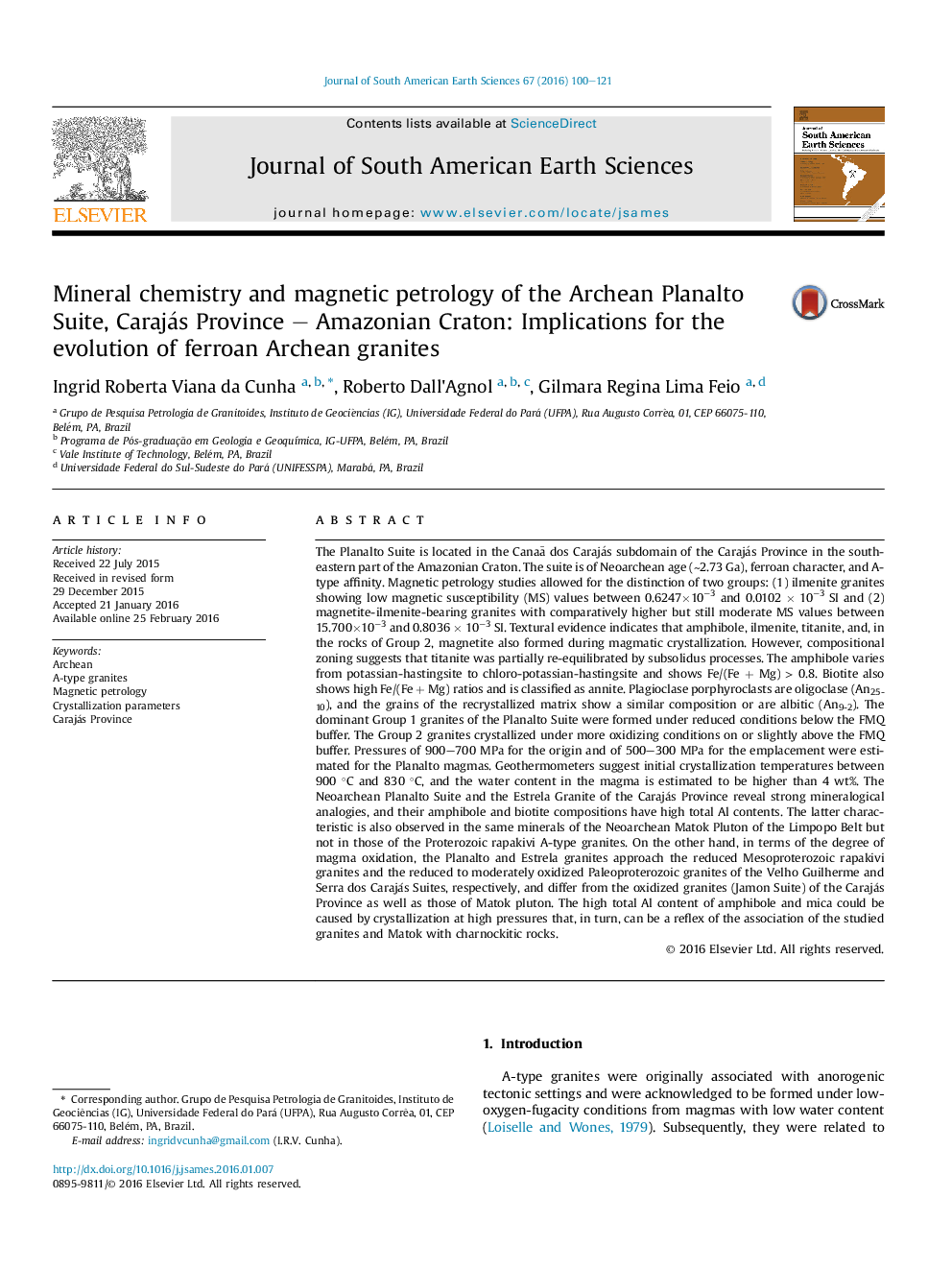| کد مقاله | کد نشریه | سال انتشار | مقاله انگلیسی | نسخه تمام متن |
|---|---|---|---|---|
| 4682013 | 1635143 | 2016 | 22 صفحه PDF | دانلود رایگان |

• The Neoarchean Planalto Suite is composed of ferroan granites that crystallized under reducing conditions.
• The Planalto magmas were formed at high crustal pressures, evolved at elevated temperatures, and were enriched in water.
• The granites evolved in a collisional setting and were emplaced at moderate pressures.
• The crystallization parameters of the Planalto granites differ from those of classic Proterozoic A-type granites.
• The granites of the Planalto Suite are similar to Neoarchean granites of the Carajás Province and of the Limpopo Belt.
The Planalto Suite is located in the Canaã dos Carajás subdomain of the Carajás Province in the southeastern part of the Amazonian Craton. The suite is of Neoarchean age (∼2.73 Ga), ferroan character, and A-type affinity. Magnetic petrology studies allowed for the distinction of two groups: (1) ilmenite granites showing low magnetic susceptibility (MS) values between 0.6247×10−3 and 0.0102 × 10−3 SI and (2) magnetite-ilmenite-bearing granites with comparatively higher but still moderate MS values between 15.700×10−3 and 0.8036 × 10−3 SI. Textural evidence indicates that amphibole, ilmenite, titanite, and, in the rocks of Group 2, magnetite also formed during magmatic crystallization. However, compositional zoning suggests that titanite was partially re-equilibrated by subsolidus processes. The amphibole varies from potassian-hastingsite to chloro-potassian-hastingsite and shows Fe/(Fe + Mg) > 0.8. Biotite also shows high Fe/(Fe + Mg) ratios and is classified as annite. Plagioclase porphyroclasts are oligoclase (An25-10), and the grains of the recrystallized matrix show a similar composition or are albitic (An9-2). The dominant Group 1 granites of the Planalto Suite were formed under reduced conditions below the FMQ buffer. The Group 2 granites crystallized under more oxidizing conditions on or slightly above the FMQ buffer. Pressures of 900–700 MPa for the origin and of 500–300 MPa for the emplacement were estimated for the Planalto magmas. Geothermometers suggest initial crystallization temperatures between 900 °C and 830 °C, and the water content in the magma is estimated to be higher than 4 wt%. The Neoarchean Planalto Suite and the Estrela Granite of the Carajás Province reveal strong mineralogical analogies, and their amphibole and biotite compositions have high total Al contents. The latter characteristic is also observed in the same minerals of the Neoarchean Matok Pluton of the Limpopo Belt but not in those of the Proterozoic rapakivi A-type granites. On the other hand, in terms of the degree of magma oxidation, the Planalto and Estrela granites approach the reduced Mesoproterozoic rapakivi granites and the reduced to moderately oxidized Paleoproterozoic granites of the Velho Guilherme and Serra dos Carajás Suites, respectively, and differ from the oxidized granites (Jamon Suite) of the Carajás Province as well as those of Matok pluton. The high total Al content of amphibole and mica could be caused by crystallization at high pressures that, in turn, can be a reflex of the association of the studied granites and Matok with charnockitic rocks.
Journal: Journal of South American Earth Sciences - Volume 67, April 2016, Pages 100–121